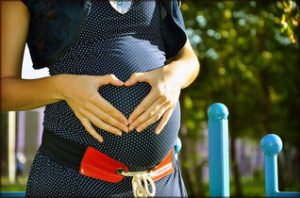Surrogacy in Queensland
You would be aware that some big changes were made to the law on Surrogacy in Queensland in 2010.
Previous position
Surrogacy arrangements in Queensland have historically been illegal. The Surrogate Parenthood Act 1988 (Qld) governed arrangements for both altruistic and commercial surrogacy.
That Act provided that a person had committed an offence if they entered into a surrogacy arrangement.
Accordingly, those wishing to enter into a surrogacy arrangement have been forced to travel interstate or overseas in order to have the necessary procedures carried out, and have still faced the fear of prosecution under the law.
New Legislation
On 16 February 2010 the Queensland Government passed the Surrogacy Act 2010. This Act now legalises non-commercial (or ‘altruistic’) surrogacy arrangements in Queensland. A commencement date has not yet been set for the new legislation.
What is a ‘Commercial’ surrogacy arrangement?
A surrogacy arrangement will be considered a commercial arrangement where the ‘birth parents’ receive any type of payment, reward or other material benefit for themselves as a result of agreeing to enter into a surrogacy arrangement.
However, the payment of the birth mother’s reasonable medical, legal and other costs associated with becoming pregnant, giving birth and obtaining advice and counselling about the surrogacy arrangement will not make the arrangement a commercial one. In fact, the legislation even allows intended parents to reimburse the birth mother for lost earnings for up to two months leave associated with the pregnancy or birth.
The new Queensland legislation will provide a framework which will recognise the rights of the ‘intended parents’ in ways which have previously been out of reach.
The Act provides that, the ‘intended parents’ of a child may apply to a Court for a Parentage Order provided certain requirements are met. Those requirements include:
- That the Order be in the ‘best interests’ of the child;
- That the child must have lived with the applicants for at least 28 days prior to the application and is living with the applicants at the time the application is made and the time of the hearing;
- There is evidence of a medical or social need for the surrogacy arrangement;
- The surrogacy arrangement was made after the birth parents and the intended parents obtained independent legal advice and counselling;
- That the surrogacy arrangement was made before the child was conceived, and that the arrangement is in writing and signed by the birth parents and the intended parents;
- The birth parents and the intended parents were at least 25 years of age when the surrogacy arrangement was made;
- That the birth parents are resident in Queensland;
- The birth parents and the applicants consent to the making of the parentage Order at the time of the hearing.
Importantly, the legislation prevents women applicants who are ‘intended parents’ from obtaining a parentage Order, unless they are unable to conceive or carry a child on medical grounds. In the case of female same sex couples, they must be able to show that both women are unable to carry or conceive a child on medical grounds.
While there was much debate in the Parliament over whether the new laws should apply to same sex couples or not, the legislation was ultimately passed allowing the same sex couples to enter into surrogacy arrangements and subsequently apply for a parentage Order.
What if it all goes wrong?
Although non-commercial surrogacy will no longer by ‘illegal’ in Queensland, it will still be unenforceable. In other words, even if you have a written agreement which sets out your surrogacy arrangement and has been signed by all parties, if the birth parents refused to give the child to the ‘intended parents’, or the intended parents refuse to take the child, neither party can rely on the written agreement to enforce the arrangement.
It will be up to either set of parents to make an application under the Family Law Act for Orders relating to whom the child should ‘live with’ and who the child should spend time with. That decision will be made based on the best interests of the child.
The Family Court of Australia has not yet considered a matter involving a surrogacy where both ‘intended parents’ are also the ‘biological parents’ of the child (i.e. the egg and sperm belong to both ‘intended parents’).
The Court, in 1998, considered a matter where the surrogate mother was also the biological mother of the child, and in that case the Court ultimately decided that the best interests of the child could be served by the child living with the biological mother and biological siblings.







